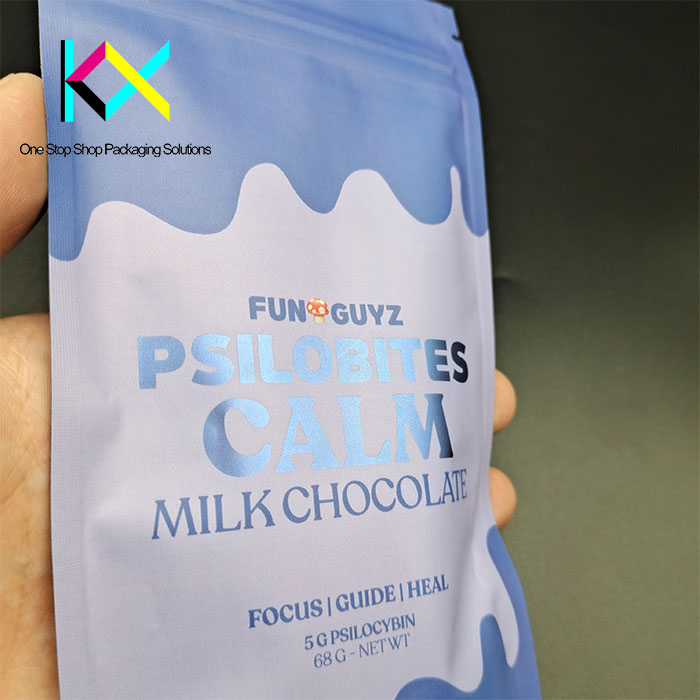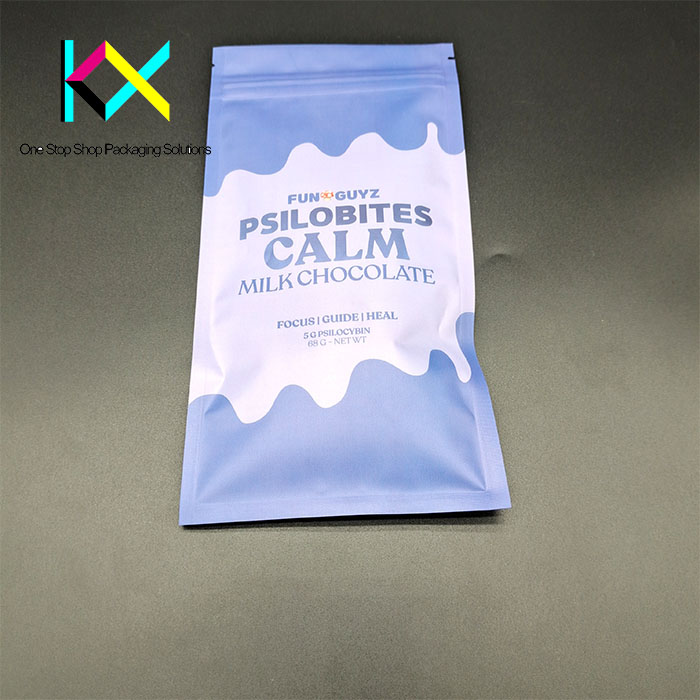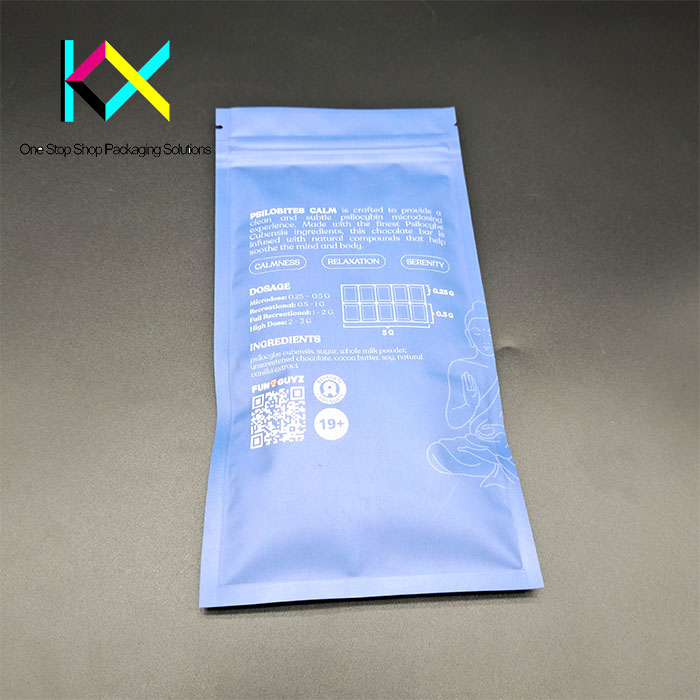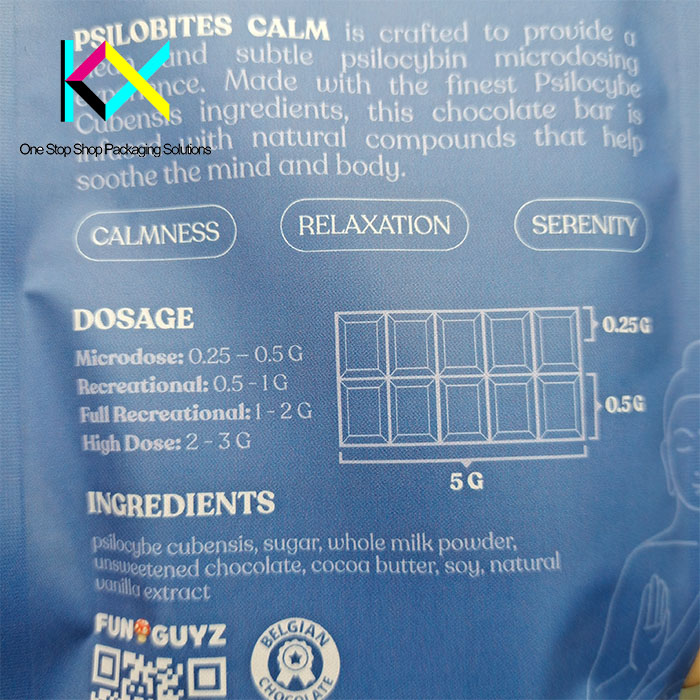Dry Lamination vs. Solventless Lamination in the Production of Plastic Soft Packaging Bags: A Comparison
In the production of plastic soft packaging bags, lamination plays a crucial role in ensuring durability, protection, and aesthetic appeal. Among the various lamination techniques, dry lamination and solventless lamination are two prominent methods, each with its unique characteristics and advantages. This article explores the differences between these two lamination methods, focusing on the role of digital printing technology and how Kexin Packaging, a leading manufacturer in the field, is utilizing these techniques to offer a complete range of composite packaging bags.

Dry Lamination: Traditional and Versatile
Dry lamination, also known as solvent-based lamination, is one of the most widely used methods in flexible packaging. It involves applying a dry adhesive onto the substrate material, followed by the bonding of different layers, such as films or foils. The adhesive is activated through heat and pressure, which ensures a strong bond between the materials.
This method is particularly well-suited for packaging applications that require high barrier properties, such as food packaging or medical supplies. The dry lamination process is versatile, allowing the use of various materials, including polyethylene, polypropylene, and polyester. Its ability to laminate a wide range of substrates makes it ideal for creating complex, multi-layered packaging solutions.
However, dry lamination does have its drawbacks. The use of solvents can result in environmental concerns due to volatile organic compounds (VOCs) being released during the process. Additionally, it may not be as suitable for packaging applications that require extremely high-quality graphics or intricate designs.

Solventless Lamination: Eco-friendly and Efficient
Solventless lamination, as the name suggests, eliminates the need for solvents during the bonding process. Instead of using a liquid adhesive activated by heat, solventless lamination employs a reactive adhesive that bonds the layers together through a chemical reaction. This method has gained popularity due to its more environmentally friendly nature, as it avoids the harmful VOCs associated with solvent-based processes.
Solventless lamination also offers faster curing times compared to traditional dry lamination, reducing production cycles and energy consumption. Additionally, this method ensures that the adhesive remains in a solid form, preventing the risk of contamination during production and enhancing the overall quality of the packaging.
For brands looking to align with sustainability initiatives, solventless lamination provides a cleaner and safer alternative without compromising the strength or integrity of the packaging. It is increasingly being used in industries where eco-conscious consumers demand greener solutions, such as organic food packaging or eco-friendly consumer goods.

Digital Printing Technology: The Future of Flexible Packaging
As both dry lamination and solventless lamination continue to evolve, digital printing technology has become an integral part of the flexible packaging industry. Digital printing offers numerous advantages, including high-resolution graphics, reduced setup times, and the ability to produce short runs with customized designs. This technology has revolutionized the way packaging is produced, enabling brands to create visually striking and personalized packaging for a diverse range of products.
Kexin Packaging, a leading packaging solution provider, has embraced digital printing technology as part of its commitment to quality and innovation. By integrating digital printing into its production process, Kexin Packaging is able to offer high-quality, customized packaging that meets the unique needs of its clients. Whether it’s for small batch runs or large-scale production, Kexin Packaging can produce vibrant, detailed designs on composite packaging bags, making them stand out in the competitive marketplace.

Kexin Packaging: A Complete Range of Composite Packaging Bags
Kexin Packaging is dedicated to providing a full range of composite packaging bags, serving various industries with tailored solutions. The company employs both dry lamination and solventless lamination techniques to meet the specific needs of its customers. With the integration of digital printing technology, Kexin Packaging ensures that every package it produces is not only durable and functional but also visually appealing.
From food and beverage packaging to medical supplies and industrial applications, Kexin Packaging’s diverse portfolio ensures that clients receive the highest quality packaging solutions. The company’s commitment to sustainability, efficiency, and innovation makes it a trusted partner for businesses looking to create eco-friendly, high-performance packaging that resonates with today’s environmentally conscious consumers.
Conclusion
The choice between dry lamination and solventless lamination ultimately depends on the specific requirements of the packaging application. While dry lamination remains a versatile and widely used method, solventless lamination offers an eco-friendly alternative without sacrificing performance. By incorporating digital printing technology into its processes, Kexin Packaging stands at the forefront of the industry, offering a complete range of composite packaging bags that combine innovation, sustainability, and quality to meet the evolving demands of the market.
You can visit our website to know more about our flexible packaging pouch:
